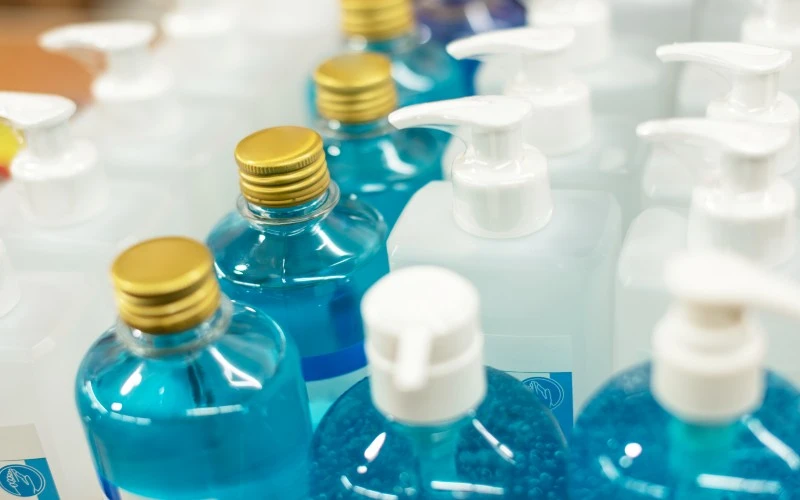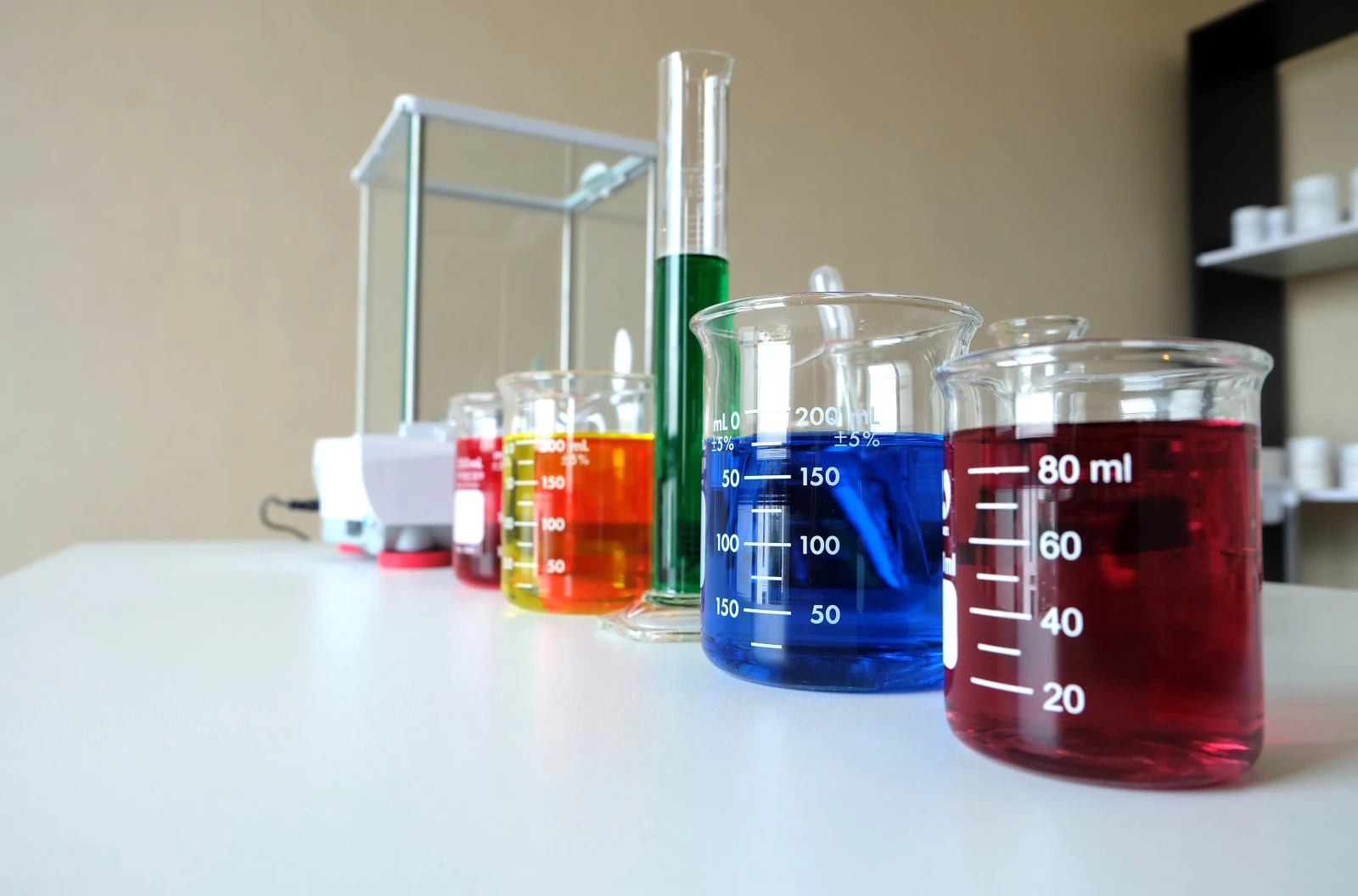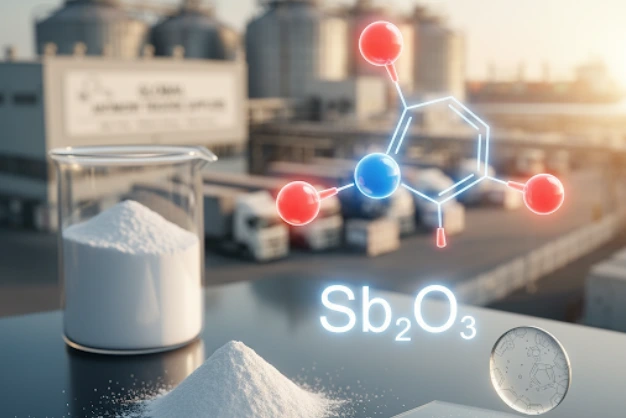TABLE OF CONTENTS
TABLE OF CONTENTS
Introduction
Propargyl alcohol, a cornerstone in chemical synthesis, boasts wide-ranging applications from pharmaceuticals to advanced materials. Understanding its chemical properties—notably purity, color, and physical characteristics—is essential for leveraging its full potential. This blog delves into these aspects, providing insights into propargyl alcohol’s boiling point, viscosity, refractive index, and more. Whether for industrial use or research, grasping these properties ensures effective and safe application, underscoring the compound’s significance in modern chemistry. Join us as we explore the intricate world of propargyl alcohol, shedding light on its pivotal role across various sectors.
Purity of Propargyl Alcohol
The purity of propargyl alcohol is a critical factor that significantly influences its efficacy and safety in various applications. Defined as the measure of how free a substance is from impurities or contaminants, purity directly impacts the performance of propargyl alcohol in chemical syntheses and industrial processes.
Industrial and Laboratory Standards
In industrial settings, propargyl alcohol is often required to have a high degree of purity, typically above 98%, to ensure optimal reactivity and prevent unwanted side reactions. For laboratory applications, especially those in pharmaceutical research or material science, even higher purity levels may be necessary. Such stringent standards are pivotal for achieving reliable results and maintaining the integrity of the final products.
Implications of Impurities
Impurities present in propargyl alcohol can arise from the synthesis process or degradation over time. These contaminants may include water, organic by-products, or residual catalysts, each capable of affecting the compound’s stability and reactivity. For instance, water content can influence the solubility of reactants, while organic impurities might participate in side reactions, compromising the yield or purity of desired products.
Assessing and Ensuring Purity
Purity assessment involves sophisticated analytical techniques, such as gas chromatography (GC), high-performance liquid chromatography (HPLC), and nuclear magnetic resonance (NMR) spectroscopy. These methods provide detailed insights into the composition of propargyl alcohol samples, allowing for the quantification of specific impurities.
Manufacturers and suppliers of propargyl alcohol implement rigorous quality control measures to ensure the compound meets established purity criteria. This often includes careful selection of raw materials, optimization of synthesis pathways, and implementation of purification steps, such as distillation or recrystallization, tailored to remove impurities effectively.
Color of Propargyl Alcohol
The color of propargyl alcohol, a significant physical attribute, offers insight into its purity and quality. Typically, pure propargyl alcohol appears as a clear, colorless liquid. This characteristic transparency is indicative of high purity and is expected in propargyl alcohol used in precise industrial applications and scientific research.
Indications of Color Variations
Variations in the color of propargyl alcohol can signal the presence of impurities or degradation. A yellowish tint, for example, may develop over time or when the alcohol is exposed to light, air, or certain contaminants. Such color changes are crucial for chemists and quality control technicians, as they may affect the substance’s reactivity and suitability for sensitive reactions.
Factors Affecting Color Stability
Several factors can influence the color stability of propargyl alcohol
Assessing Quality through Color
In quality assessment protocols, the color of propargyl alcohol is a quick and straightforward parameter to evaluate. While not as precise as spectroscopic analysis or chromatography, a visual inspection can provide immediate feedback on the substance’s condition, prompting further testing if necessary.
Maintaining Colorlessness
To preserve the colorless quality of propargyl alcohol, it is recommended to store the chemical in amber-colored, tightly sealed containers under controlled temperatures, away from direct sunlight. Such precautions help maintain its purity and extend its shelf life, ensuring its effectiveness in applications ranging from organic synthesis to the production of specialty chemicals.
The viscosity of Propargyl Alcohol
Viscosity, a measure of a fluid’s resistance to flow, is a critical physical property in the characterization and application of liquid substances like propargyl alcohol. In the context of propargyl alcohol, viscosity not only impacts its handling and use in industrial processes but also influences its behavior in chemical reactions.
Understanding Propargyl Alcohol’s Viscosity
Propargyl alcohol exhibits a relatively low viscosity, similar to that of water and other low-molecular-weight alcohols. This low viscosity facilitates its easy handling and mixing in solutions, making it an ideal solvent or reactant in various chemical syntheses. The specific viscosity value of propargyl alcohol is crucial for formulators and chemists who rely on precise fluid dynamics in their processes.
Factors Influencing Viscosity
Several factors can affect the viscosity of propargyl alcohol
- Temperature: Like most liquids, the viscosity of propargyl alcohol decreases as temperature increases. This temperature-dependence is vital for processes that operate at elevated temperatures, requiring adjustments to maintain optimal flow conditions.
- Purity: The presence of impurities or contaminants can alter the viscosity of propargyl alcohol. High-purity propargyl alcohol, free from water and other solvents, will exhibit consistent viscosity values critical for reproducibility in research and industrial applications.
- Concentration in Solutions: When used as a solvent, the viscosity of propargyl alcohol solutions will vary with the concentration of dissolved substances. Understanding these variations is essential for optimizing reaction conditions and product formulations.
Implications for Use
The low viscosity of propargyl alcohol enhances its utility in the chemical industry. It can be easily pumped, mixed, or applied in coatings and adhesives, contributing to efficient manufacturing processes. Additionally, its favorable flow characteristics under different conditions support its use in a wide range of chemical reactions, from polymerizations to organic syntheses.


Refractive Index of Propargyl Alcohol
The refractive index, a fundamental optical property, measures how much light bends, or refracts, as it passes through a substance. For chemicals like propargyl alcohol, understanding the refractive index is essential for applications that depend on optical properties, as well as for ensuring the quality and purity of the compound.
Propargyl Alcohol’s Optical Signature
Propargyl alcohol has a specific refractive index that distinguishes it from other compounds, providing a unique optical signature. This value is particularly important in the formulation of products where clarity and light transmission are critical. The refractive index of propargyl alcohol at 20°C (68°F) is approximately 1.441, a figure that places it within the range typical for organic liquids.
Implications of the Refractive Index
Measurement and Standardization
The refractive index is measured using a refractometer, a precise instrument that provides accurate and reproducible data. Standardization of temperature is crucial when measuring the refractive index, as this property is temperature-dependent. Consistency in measurement conditions ensures reliable comparison of data across different batches and sources of propargyl alcohol.
Propargyl Alcohol Chemical Properties
Propargyl alcohol, with its distinctive structure and functionality, exhibits a set of chemical properties that render it invaluable across various chemical syntheses and industrial applications. Delving into these properties sheds light on its reactivity, compatibility, and utility in diverse contexts.
Molecular Structure and Reactivity
At the heart of propargyl alcohol’s chemical behavior is its molecular structure, characterized by a carbon-carbon triple bond (alkyne) and a hydroxyl group. This combination of functional groups contributes to its high reactivity, particularly in polymerization and cycloaddition reactions, making it a pivotal reagent in the creation of polymers and organic compounds.
Solubility and Miscibility
Propargyl alcohol is notably soluble in water and many organic solvents, including alcohols, ethers, and acetone. This solubility profile enhances its versatility as a solvent or co-solvent in chemical reactions, facilitating the dissolution of various reactants and the formation of homogeneous reaction mixtures.
Acidity and Basicity (pKa)
The presence of the hydroxyl group imparts a degree of acidity to propargyl alcohol, with a pKa value of approximately 15. This relatively mild acidity enables it to participate in deprotonation reactions under certain conditions, interacting with bases to form propargylates, which are useful intermediates in organic synthesis.
Thermal Stability and Volatility
Propargyl alcohol possesses moderate thermal stability, decomposing at elevated temperatures to form various by-products. Its volatility is reflected in its boiling point of about 114°C (237°F), a property that necessitates careful temperature control during storage and use, particularly in processes involving heat.
Safety and Reactivity Hazards
Given its reactivity, propargyl alcohol must be handled with caution, as it can undergo spontaneous polymerization if contaminated or exposed to certain catalysts. Its flammability and potential toxicity also underscore the need for stringent safety protocols in handling, storage, and disposal.
Propargyl Alcohol pKa
The pKa value of a substance is a numerical scale used to quantify the acidity or basicity of a chemical species in solution. For propargyl alcohol, understanding its pKa is essential for chemists and researchers, as it influences the compound’s behavior in various chemical environments, particularly in reactions involving proton transfer.
Acidity of Propargyl Alcohol
Propargyl alcohol, chemically known as 2-Propyn-1-ol, exhibits mild acidity due to the hydroxyl (–OH) group attached to its alkyne-bearing carbon. The pKa of propargyl alcohol is approximately 15, a value that places it in the range of weak acids. This level of acidity is significant because it determines the compound’s ability to donate a proton (H⁺) in chemical reactions, forming its conjugate base, the propargylate ion.
Influence of pKa on Chemical Reactions
The pKa value directly impacts propargyl alcohol’s reactivity in nucleophilic substitution reactions, condensations, and as a catalyst in certain organic transformations. For instance, its relatively high pKa compared to stronger acids allows propargyl alcohol to act as a proton donor in the presence of strong bases, facilitating the formation of propargylate ions. These ions are highly reactive intermediates in a variety of organic syntheses, including the preparation of propargyl ethers and esters.
Role in Synthesis and Catalysis
Understanding the pKa of propargyl alcohol is crucial for its effective use as a reagent in organic synthesis. Its ability to participate in base-catalyzed deprotonation reactions makes it a versatile tool in the synthesis of complex molecules, particularly in pharmaceuticals and specialty chemicals. Additionally, the propargylate ion, derived from propargyl alcohol, can serve as a nucleophile in various carbon-carbon and carbon-heteroatom bond-forming reactions, expanding its utility in organic chemistry.
Conclusion
In conclusion, propargyl alcohol emerges as a compound of significant interest due to its unique chemical structure, versatile applications, and critical properties such as purity, color, boiling point, viscosity, refractive index, and pKa value. Each attribute plays a pivotal role in defining its utility across various industries, from pharmaceuticals to polymer synthesis. Understanding these properties not only facilitates the effective and safe use of propargyl alcohol but also underscores its importance in advancing scientific research and industrial processes. As we continue to explore its potential, propargyl alcohol remains a cornerstone in the development of innovative chemical solutions.
Contact Us
Questions or looking for a quote?





